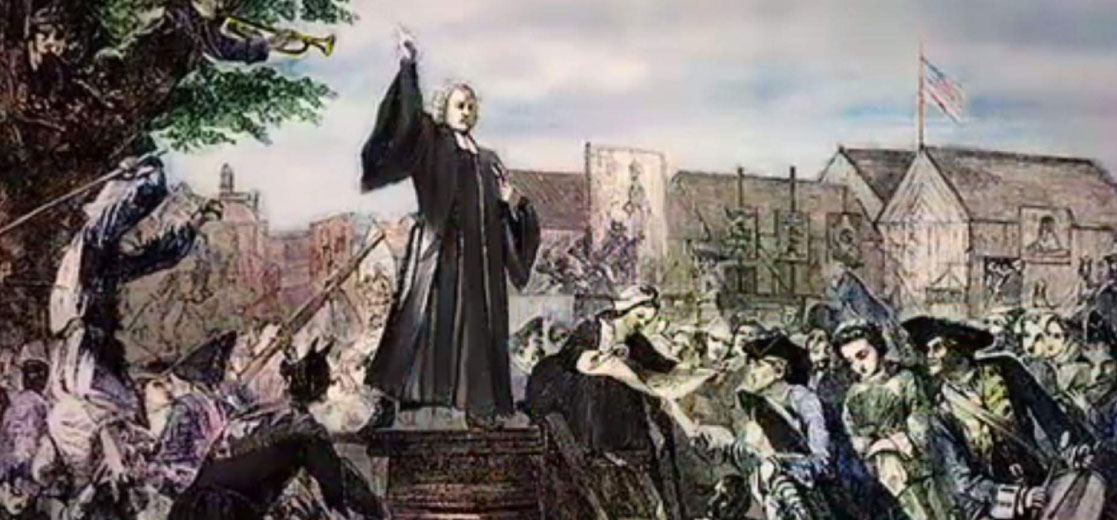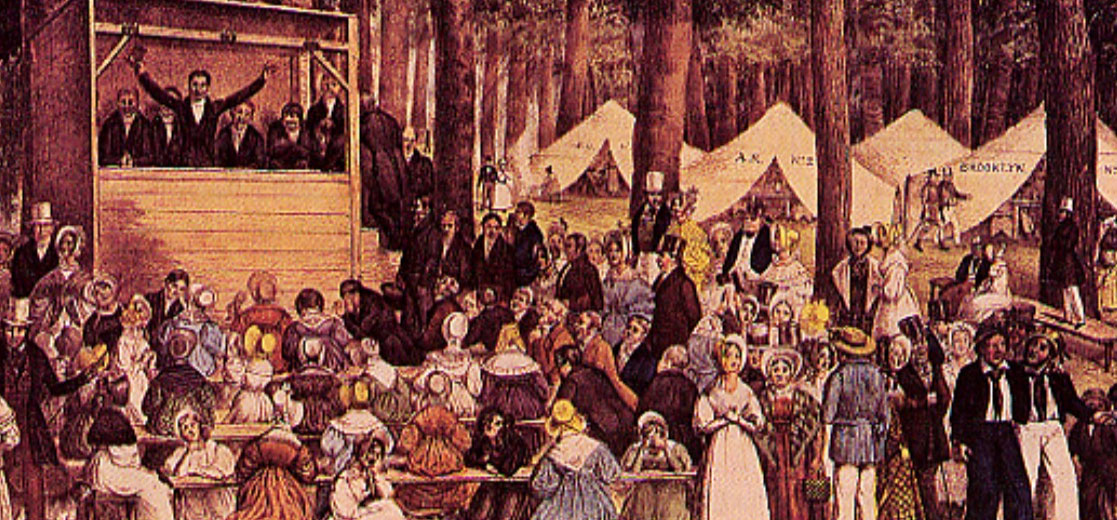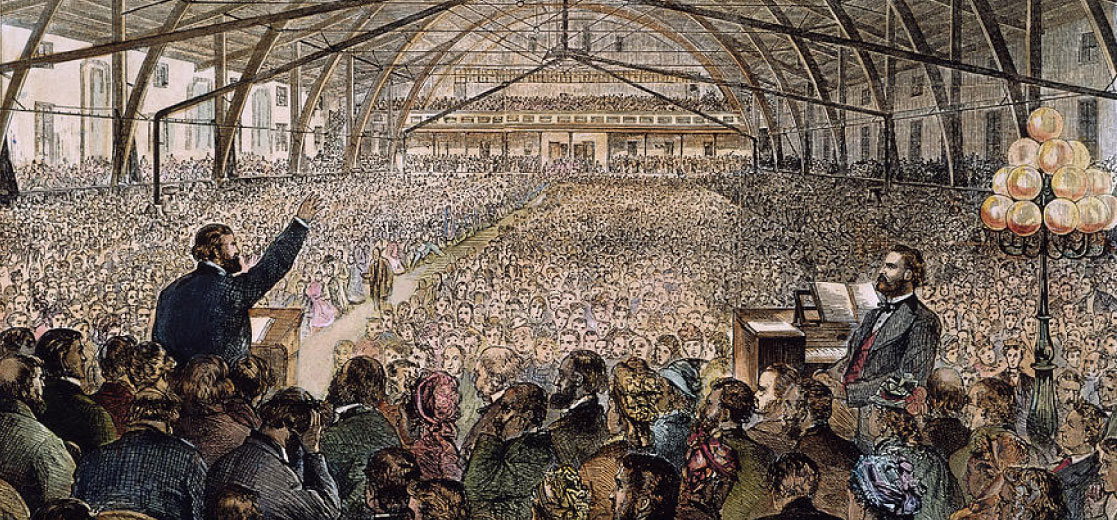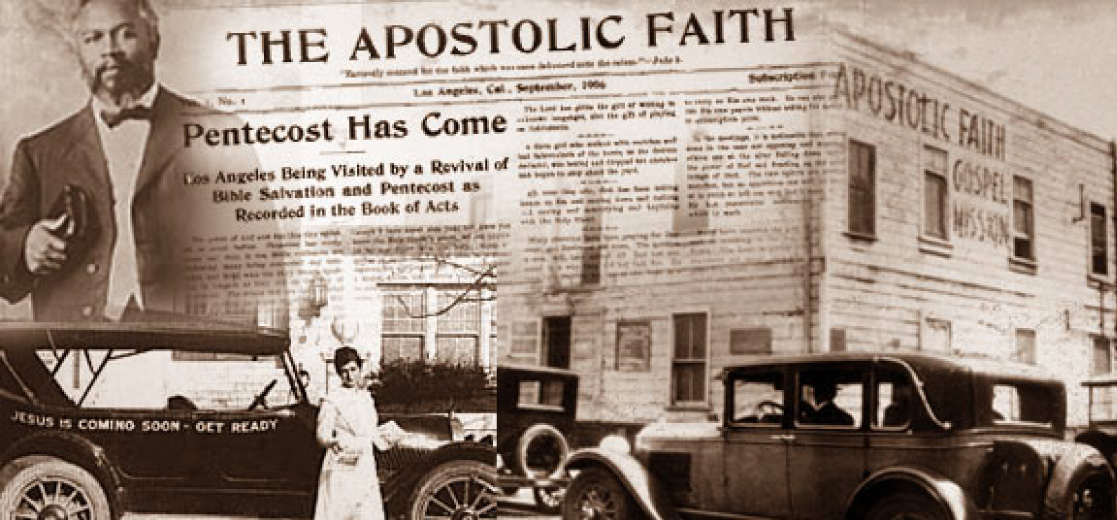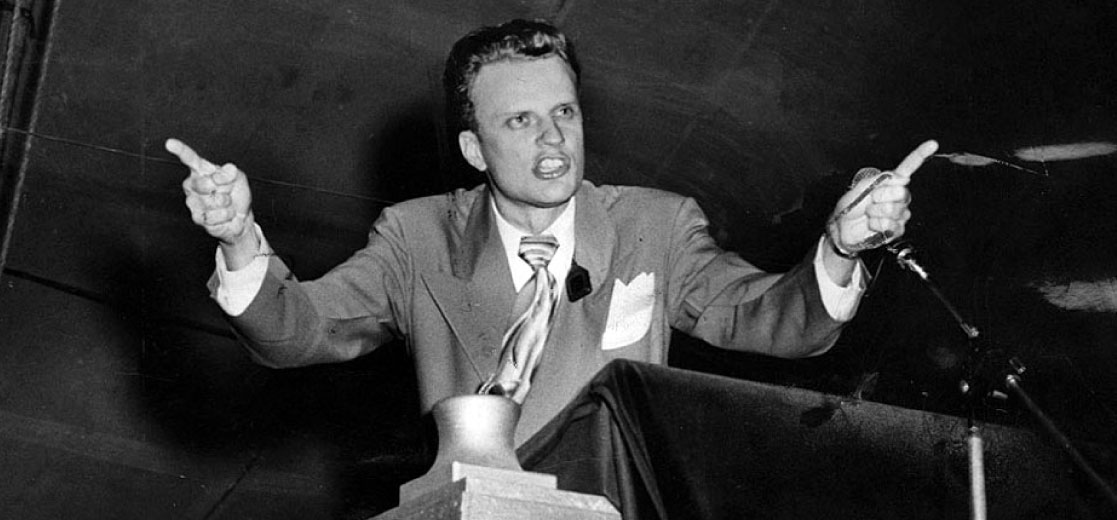What is a revival? Growing up in the southern United States, I can remember revival meetings that lasted at least a week. Every night you’d attend church and hear a traveling minister preach powerfully the Word of God and invite attendees to receive the good news of Jesus for the first time, or to come forward and recommit your life to the ways of faith. It’s this reawakening (and the residual effects on society) that creates what historians interpret onto history as a period of revival. What sparks great American revivals? The short answer is the Holy Spirit. The more complicated answer includes cultural shifts, local and global events, and the willingness of individuals to embrace faithful leadership. Here are five great American revivals, citing the who, what, when, where and how.
5 Great American Revivals
First Great Awakening
When: 1730-40s
Where: England and then the colonies, most notably Massachusetts
What: Churches are lax in their requirements for church participation and membership. It is called the Half-Way Covenant and it allowed children of non-believing parents to still be baptized in “good faith” that they’d be reared with the morals of the church. Remember that church membership is voluntary which creates a challenge for what is Truth and the function of infant baptism as an ushering into wider community citizenship.
Who: Jonathan Edwards is well-known for his “Sinners in the Hand of an Angry God” and so many other well-crafted, expository sermons that emphasize the rational appeal for faith (he was greatly influenced by John Locke). John Weasley, Charles Wesley, and George Whitfield are several other instrumental leaders. John Weasley begins the Methodist movement. His brother, Charles give it its music, writing more than 6,000 hymns. Whitfield begins an orphanage in Savannah (it’s still there) and preaches to nearly a million people throughout the colonies.
How: Through the local teaching of Edwards and the traveling ministry or Whitfield, starting in Georgia and working up to Massachusetts, the colonial people are convicted of their sin and renewed in their need for Jesus.
Second Great Awakening
When: 1820s-1850s
Where: Throughout America and England
What: The moral fabric of society is tattered, torn by sin and misplaced affections. The desire to usher in the Second Coming of Jesus by saving society provides the strong impetus to make certain, “thy kingdom come, thy will be done on Earth as it is in Heaven.”
Who: Charles Finney offers a fiery message of repentance. In the big tents, constructed for meetings lasting weeks and weeks, he institutes the “Crying Bench”, where he invites those renewing or professing faith to proceed down front and make a public commitment to Jesus. The Awakening theology is clear in Finney: Jesus calls everyone and anyone can heed the call. Finney helps to establish Oberlin College as well.
How: Whereas the First Great Awakening works itself through the church, The Second will appeal to anyone and everyone. It brings about the temperance movement, the antislavery movement (as well as the Underground Railroad), women’s rights, the Salvation Army, the Adventist movement, the YMCA, and sees mighty growth in the Baptist and Methodist denominations.
Third Great Awakening
When: 1875-85
Where: Chicago
What: The Civil War ends in 1865, and, with the Great Chicago Fire of 1871 the vulnerability of humanity is clear. This backdrop provides the opportunity for many to see their need for Christ.
Who: D.L. Moody begins a Bible study for street children in the 1850s. It grows to a substantial number whereby even President-elect Abraham Lincoln attends to see it for himself. Moody goes on to establish Moody Church and Bible Institute and continues to preach all around the country to more than 100,000 million people. Ira Sankey, a notable hymn writer, works closely with Moody.
How: Moody is uneducated and breaks out of the normal conventions of the church. The appeal is simple: Jesus wants you the way you are, and, come to him now because he’s coming back soon.
Azusa Street Revival
When: 1906-1915
Where: Los Angeles, in the church at 312 Azusa Street
What: What happens on Azusa Street sparks what we know today as the Pentecostal movement. It is built on the Holiness movement which focuses on sanctification (being noticeably separated from the habits of the world) and is a repercussion of the Second Great Awakening. On April 9, 1906, the Spirit of God falls down and several people begin speaking in tongues. They call it the “second blessing,” or sometimes the “third work of grace”, the first being salvation, and the second, sanctification.
Who: William J. Seymour is front and center, from the discipleship of Charles Fox Parim of Topeka, Kansas, and the influence of the Evening Light Saints or Church of God in Anderson, Indiana. Seymour sometimes prays for seven hours a day for months on end with an expectation that God would act in his timing.
How: The revival helps integrate the church into a more harmonious, unified community, bringing together rich and poor, black and white, male and female.Humanism is beginning to take root with all its “superman” thoughts of the future glories of society. The Azusa revival and subsequent Pentecostal movement brought back into focus the gifts of the Holy Spirit and the unique place of the church as God’s institution in the world to do his bidding.
Twentieth Century Revival
When: 1910-1970s
Where: American cities, most notably New York and Los Angeles
What: The Industrial Age is in full force and Darwinism is reshaping our sense of the value of history and future accomplishment. Much like the revivals before it, this period is noted for its large gatherings and the accusation of sin and proximity of people to the gates of Hell as a result of their wayward lives.
Who: Billy Sunday, a professional baseball player turned preacher, is direct and powerful with the Gospel message beginning in 1907. He carries the message to 1.5 million people around the country in month-long meetings. His preaches up until his death in 1935. Billy Graham enters the scene with vigor in 1949 with his Los Angeles crusades that catch the attention of the press. He goes on to hold more than 400 crusades in 185 countries, attracting arena-size crowds and broadcasting many crusades on television.
How: Sunday and Graham are two of many who see the fraying of culture, both before the Wars and certainly after World War II. They represent the preaching arm of revival. Francis Buchman who begins the Oxford Group and Alcoholics Anonymous and Robert Pierce who founds World Vision and Samaritan’s Purse represent the social arm of revival. Graham’s work is careful to work with local churches, the outgrowth of the movement is not isolated but designed to be a stimulus for strong church participation and discipleship.
There’s a wealth of information out there about each of these 5 Great American Revivals, more than could be addressed in this blog post. God’s work is not isolated but sometimes we see it concentrated around specific places and people, like in the cases above. Could God be working toward a revival now? May our hearts and minds be open. May our posture be prayer. May our hope be in the living God who will seek and save those who are lost. May we be his instruments.
Test Drive Sharefaith’s Award-Winning Products
Sharefaith is the only service that combines church websites, kids Bible resources, graphics, video, media, giving and donations as well as presentation and print. Try a free trial today!


